Military Order of Saint James of the Sword, Type III, Grand Cross Breast Star
CATEGORY: Version
SKU: 01.PRT.0104.306.01.000
Estimated market value:
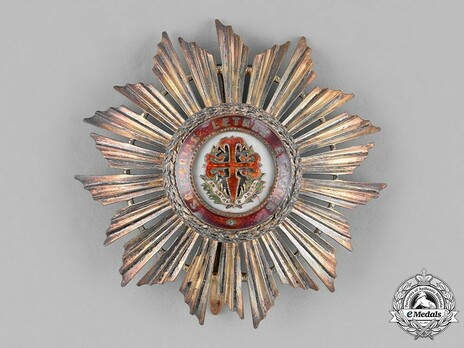
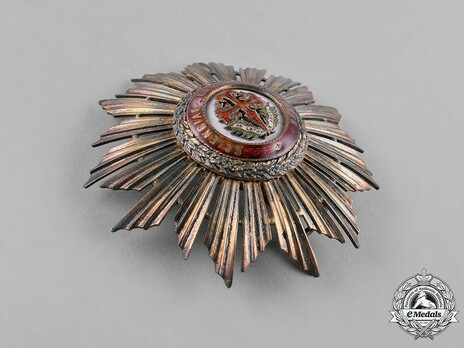
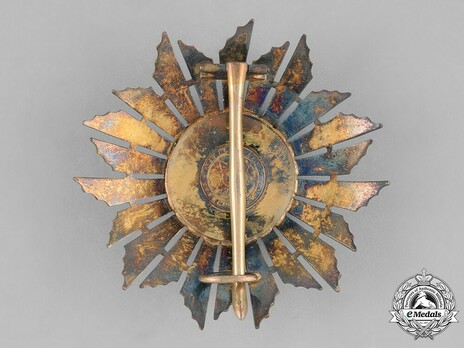
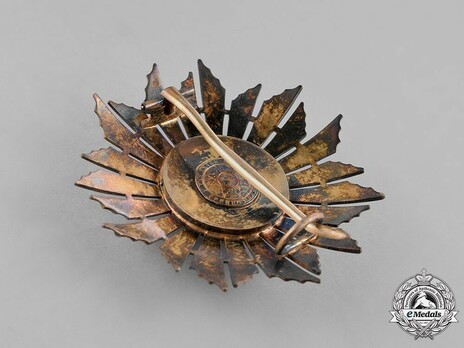
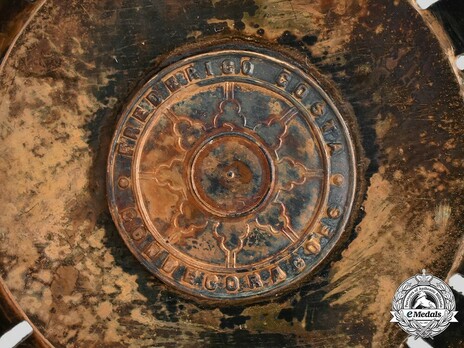
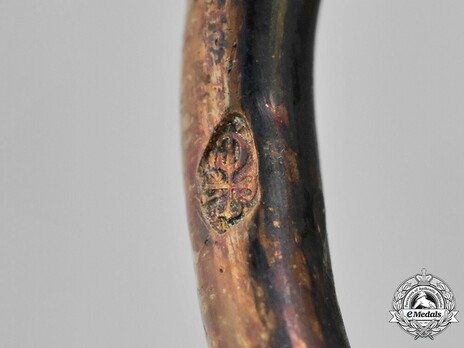
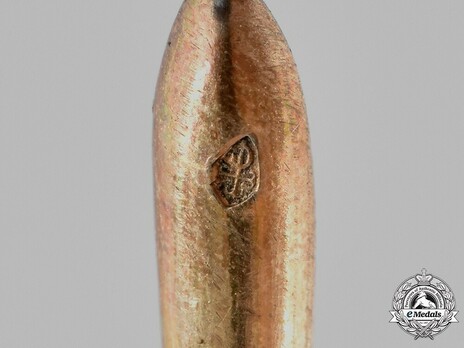
Estimated market value:
A multiple ray twenty-two pointed star in silver gilt, obverse centre featuring a red enameled florid cross on a white enameled field, circumscribed by a red enameled border inscribed SCIENCIAS, LETRAS E ARTES (Science, Literature, and Arts), encompassed by a gilt laurel wreath, reverse with central pin assembly, with maker’s cartouche of FREDERICO COSTA, the principal jeweler in Lisbon, hallmarked on pin and catch with Portuguese hallmark of silver purity of .833, measuring 71.44 mm (w) x 71.37 mm (h), with enamel loss, better than fine. https://www.emedals.com/europe/portugal/orders/other/portugal-republic-a-military-order-of-saint-james-of-the-sword-grand-officer-by-frederico-costa-c-1930
The Military Order of Saint James of the Sword (Ordem Militar de Santiago da Espada) was first established in Galicia by King Ferdinand II of León and Galicia circa 1170. It was founded to recognize the military efforts for expelling the Moors of the Peninsula and escorting pilgrims to the shrine of St. James the Greater in Santiago de Compostela, Galicia. The Order was approved by Pope Alexander III in 1175.
In 1172, a Portuguese branch of the Order appeared when King D. Afonso Henriques granted lands to those who were playing an active role in the Reconquista, although the Order was still depended on the Master in Castile. The Portuguese Order's statutes were approved by Pope Innocent III in 1215, and the Order became religious following the Augustinian vows of poverty, chastity, and obedience. In the 13th century, the Portuguese Knights perpetually divorced themselves from the Spanish rule and declared allegiance to their own Grand Master. This Portuguese Order was confirmed by Pope John XXII as an independent order in 1320. However, just in 1452 the Order was definitively separated from Castile by Pope Nicholas V.
In 1551, King João III united the Grand Masterships of the Order of Christ, of Avis, and of Santiago of the Sword under the rule of the Portuguese Crown. Since then the Heads of States of Portugal are Grand Masters of the three Religious and Military Orders.
The Order was secularized by Queen Mary I in 1789. In addition, the Grand Cross was added to the previous grades, Commander and Knight, and since then to 1862, the Order was composed of these three grades. In 1862, King D. Luis modified radically the essence of the Order changing it to an Order of scientific, literary, and artistic merit, creating the current motto of the Order. The Officer grade was also added to the Order in 1862.
The Order was disbanded in 1910 following the establishment of the First Portuguese Republic, and re-established in 1918 to reward nationals and foreigners for merits in scientific, literary, and artistic fields. The Grand Officer and Grand Collar were added during the First Portuguese Republic.
Currently, the Order is composed of six grades, i.e., Grand Collar (GColSE), Grand Cross (GCSE), Grand Officer (GOSE), Commander (ComSE), Officer (OSE), Knight (CavSE) or Dame (DamSE). All classes may wear the badge suspended from the lesser collar of the Order. The President of the Republic is the Grand Master of the Order.
The Military Order of Saint James of the Sword is classified into three types based on changes in official awarding statutes. Type I decorations were conferred from 1789 to 1862, Type II decorations were conferred from 1862-1910, and Type III decorations have been conferred since 1918.
The Type III Grand Cross Breast Star has 22 rays and an obverse inscription that translates to "Science, Letters, and Arts." It is identical to the Grand Officer Breast Star.
Type III decorations may differ in design, manufacturer, size, composition, or inscription.

Comments
Sign in to comment and reply.


Scroll Top